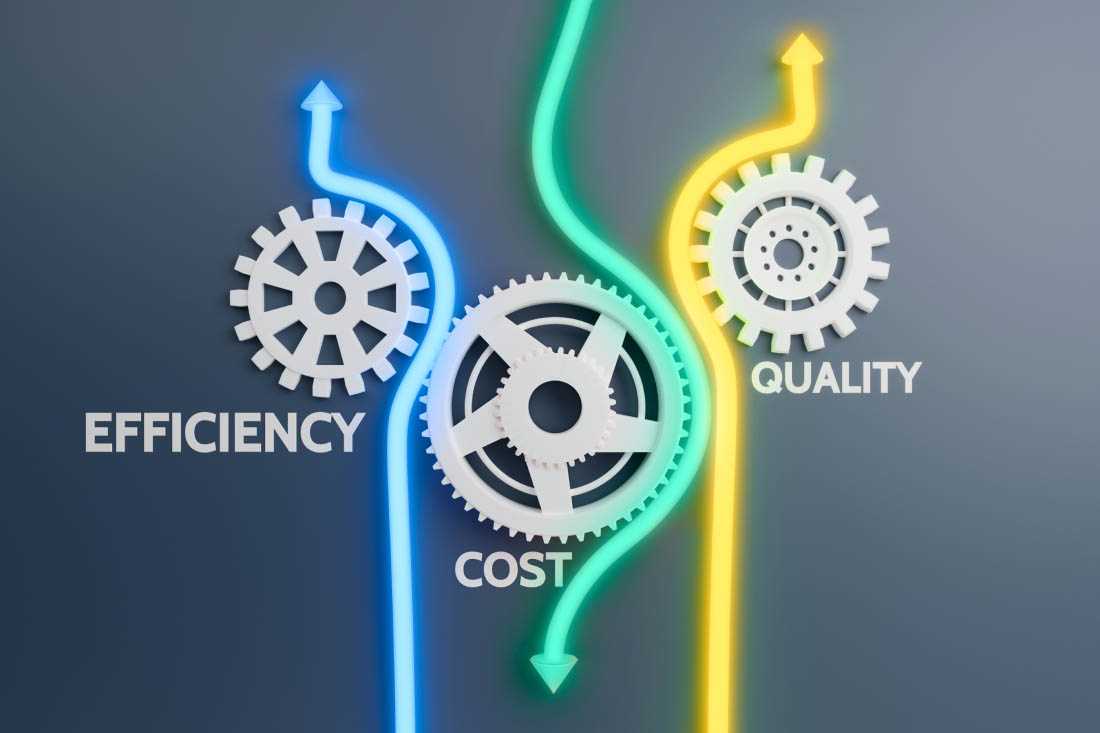Productivity is one of the most important indicators of a workforce’s health. Understanding how productive your employees are tells you how well they’re able to perform their jobs. A change in productivity may also signal issues related to employee engagement, workload balance and resource utilization.
Learn more about productivity changes and how to spot them in your organization.
What is productivity?
At its core, productivity is the ratio of combined outputs to combined inputs. In a business setting, it reflects how efficiently employees convert resources (time, labor, materials) into goods or services. A highly productive workforce yields great results with minimal waste and effort.
Organizations commonly use metrics like the number of goods and services per hour or sales per employee to gauge productivity levels. However, these figures vary significantly across industries and roles. For instance, a software developer might be assessed based on the number of features they release or bugs they fix, while a sales associate might be evaluated by their volume of closed sales. Understanding these nuances is essential for tailoring productivity strategies to fit specific job functions and industry demands.
It’s also important to understand the difference between labor productivity, or how much output each employee produces per hour worked, and multifactor productivity (MFP), which is how much output is produced per unit of combined inputs.
Why does productivity change?
Productivity changes constantly, and for a variety of reasons. Unbalanced workloads, busy seasons and disengagement all impact productivity — as do major changes such as workforce reductions and reorganizations. These and other factors cause productivity to fluctuate among individual employees, teams, departments and the organization as a whole. When determining changes in productivity, it’s important to understand that productivity is not the same as “output.” Instead, productivity is how much employees achieve over a set period of time.
When does productivity increase?
According to the Bureau of Labor Statistics, productivity increases when employees get more work done in less time. This often happens when workers increase their work (output) while decreasing the time they spend on it (labor hours). However, a rise in productivity doesn’t always mean an organization is increasing how many goods and services it sells. Productivity also increases if employees do less work but also spend less time on it.
Organizations see productivity growth when:
- They introduce better education and training programs for employees
- Technological progress, such as better tools, speeds up work time
- They create better processes or improve management
- They add automation to give employees more time to work on important tasks
- They increase output without adding headcount or overtime
- Employees are engaged and have high job satisfaction
When does productivity decrease?
Productivity decreases when employees take more time to do less work. Even if a company puts out more goods or services, if employee hours are higher, their productivity will be lower.
Organizations see decreased productivity when:
- They add headcount and need to onboard new employees
- They decrease headcount and have fewer employees to work
- Employees have to adjust to big changes in management or processes
- Employees are overworked, such as if they work more than 49 hours a week
- Employees are distracted or spend more time in meetings than focused tasks
- Underworked employees are underutilized
- Employees are disengaged
5 ways to track changes in productivity
Understanding productivity levels is key to understanding an organization’s health and competitiveness. Managers should look for changes in productivity among individuals and teams to offer support, take corrective action or introduce new processes. A few ways to track productivity include:
1. Use the productivity formula
The basic productivity formula is relatively simple:
Total output/total input = productivity
This means tracking hours worked against units produced. Each organization has to determine what “output” and “input” mean for their workforce, including what time periods to measure and what company resources to consider. For example, a shoe manufacturer might track the number of shoes finished in a day while a sales department might track the number of calls completed over a quarterly period. To calculate MFP, the shoe manufacturer might also include how many raw materials go into each shoe, including wasted materials and time.
2. Watch for missed objectives and deadlines
Employees, teams or departments not hitting goals or frequently missing deadlines is a strong indicator productivity is declining. This could be due to a lack of alignment around goals, too much work for too few employees or employee burnout. Employees may also need better tools to communicate or collaborate.
3. Look for signs of overwork or extra hours
Increased employee hours without increased output manifests as reduced productivity. When employees work too long, they lose the ability to focus and produce good work. Overtime and extra hours may also indicate it’s time to increase headcount or improve training. This is one reason time tracking is extremely useful when gauging productivity in your organization.
4. Take notice of changes in work quality
If your company’s products and services suffer quality issues, productivity may be a factor. Employees who are overworked, dissatisfied or disengaged often put less time or effort into their work, which means decreased quality. While measuring quality won’t tell you why products or services are getting better or worse, it helps reveal when you need to improve productivity through better training, communication or by boosting morale.
5. Implement productivity management software
Current technological advances give organizations the upper hand in tracking productivity by automatically measuring and assessing input and output. Tools like ActivTrak’s productivity management solution show when employees are productive, performing their best or lagging behind. Unlike manual tracking efforts, productivity software shows managers, leaders and individual employees real-time data on performance, progress toward goals and possible barriers to productivity such as distracting websites, poorly-used tools or too much time spent in meetings.
Spot productivity changes with ActivTrak
Uncovering and addressing a change in productivity is key to staying competitive in today’s business environment. Measuring productivity and understanding what impacts it is the first step in making impactful positive changes to how your employees get work done.
Get actionable insights into productivity with ActivTrak productivity management software. Make better decisions with the right data around productivity trends over time, set better productivity goals and implement customized coaching for every member of your team. Contact our sales team today and join the 9,500+ customers using ActivTrak to measure and improve productivity in their workforces.





